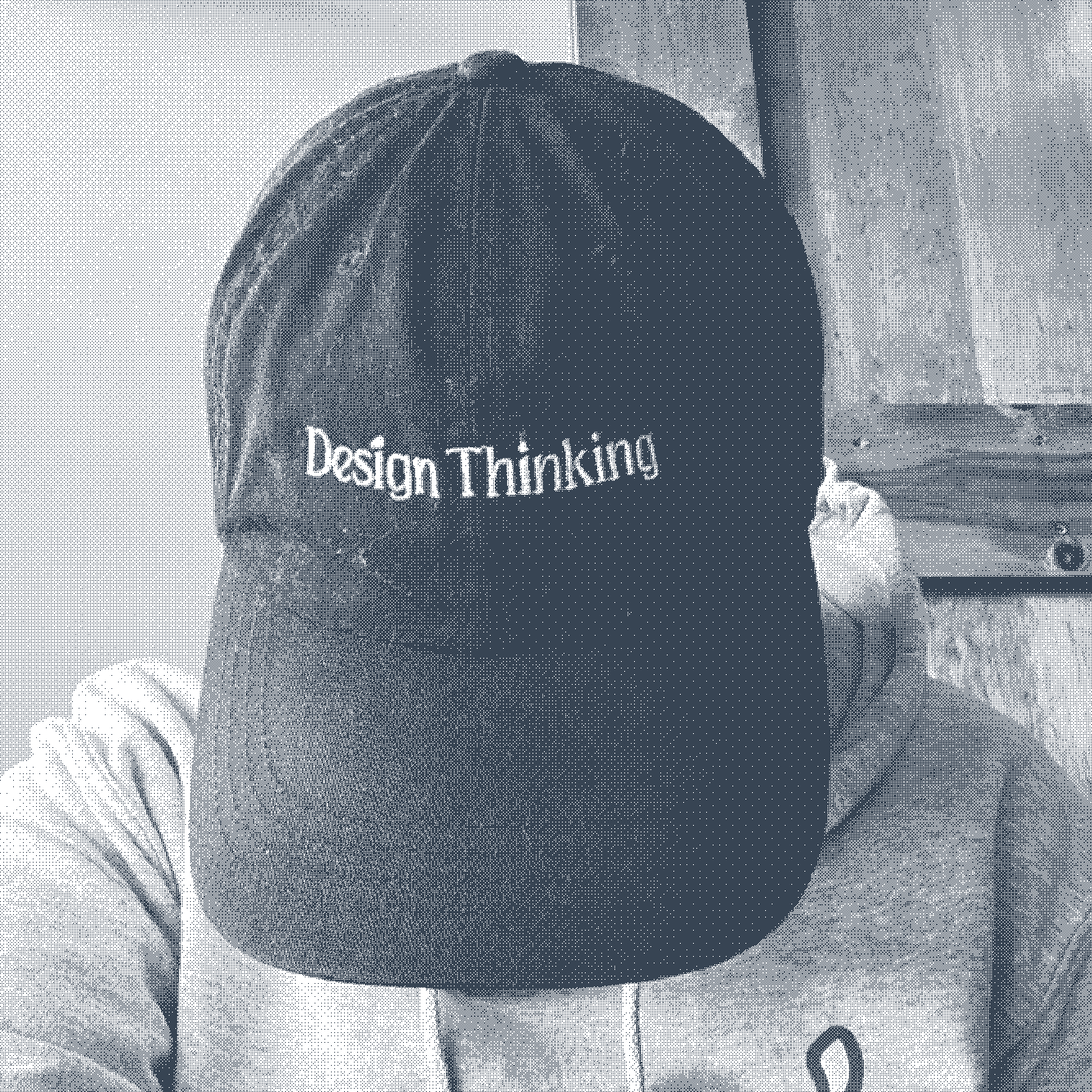
There’s this hat I wear that an old design school buddy of mine sold a limited run of about a year ago. I wear it pretty much constantly. Well, on days when my hair won’t agree with me (often enough). I always get comments on it. Some from other designers who think it’s cool. Others from peers and strangers. Design Thinking? What’s that?” Or “Thinking about design huh?” Often, I don’t know how to respond except with that bit about my old design school buddy. But sometimes I want to explain. I want to engage. They likely wouldn’t want to get into a whole thing about it. But it’s honestly something that I talk and think about on a daily basis.
Humans are constant problem solvers. We have friends who come to us about break ups or ask us why that girl won’t text them back. We have loved ones who call and ask if we can come over and look at their sink and tell them if it’s broken before they have to spend money to fix it – regardless that we don’t know anything about plumbing… or relationships for that matter.
Yet we give the advice and we look at the drainpipe. We jump in and ask questions, we have them tell us about specific instances of frustration, details of leakage and miscommunication. We go to their house and bring a tool or two. Maybe even some ice cream. Why? We want to help. We put ourselves into their shoes and say things like “If it were me…” or “When this happened to me I did this….” In design it’s the same. We seek out additional information. We actively engage.
We put ourselves into their shoes and say things like “If it were me…” or “When this happened to me I did this….” In design it’s the same. We seek out additional information. We actively engage.
Design, at its core, is the pursuit of clear communication and problem solving. Without some level of action to immerse oneself in the minds of the desired audience, any deliverable that a designer is working on will ultimately fail. It just will. Users won’t engage. The visuals won’t communicate as we expect. Just like any advice you give your friend about drains or love will fail unless you ask, listen, and relate in a way that makes sense to them.
This level of clear communication comes from understanding the needs of the user. Identifying those needs can be difficult to understand fully unless actively engaging and cultivating understanding of the problem at hand. Actively empathizing with users is the key to gaining this insight. To really understand how active empathy and design go hand in hand, you must first understand Design Thinking. Design Thinking refers to design-specific cognitive activities that designers apply during the process of designing.
Let’s focus specifically on aesthetic design. Think about the concept of “good” and “bad” visual design. “Good” design conveys information and communicates ideas. “Bad” design impairs this communication. What is it about this “bad” design that makes it unsuccessful? It could be the lack of awareness to communicate ideas in a way that interests and guides the viewer. When design is executed in a technical way – in relation to space, proportion, and principles, the importance of this technical and mindful execution of care stems from the need for the design to function so that it is appropriately understood and received. Sometimes our advice doesn’t quite land. But most of the time we find that if we ask enough questions and engage with the problem as if it were our own, we can help on some level.
Speaking to aesthetic, user experience design, and software design, our approach at Simple Thread involves carrying out user research through onsite surveys, virtual interviews, and myriad other forms of observation. We want to gain the knowledge of the user’s constraints and daily practices. The aim of this type of user research helps designers and engineers identify their users’ underlying needs. As individuals we have a burning desire to be understood. If designers and engineers can make it their goal to understand their audience and communicate that understanding, like they’re helping out a friend, they can take part in fulfilling that desire on some level. This is the pursuit of active empathic understanding. Whatever method a designer uses to bring empathy into the equation, they must always remember that sitting at a desk and limiting the scope of their research will only ever allow them to scratch the surface.
Whatever method a designer uses to bring empathy into the equation, they must always remember that sitting at a desk and limiting the scope of their research will only ever allow them to scratch the surface.
That’s why we go over to the house and we turn on the water spout. That’s why we tell our friends to show us those texts to see if we can find that exact exchange that made their “talking stage” screech to a halt. So the next time someone says to me “Thinking about design huh?” I should probably say “Yeah, aren’t you?”
Hat Designed by Dan Strogiy – https://danstrogiy.com/
Loved the article? Hated it? Didn’t even read it?
We’d love to hear from you.



